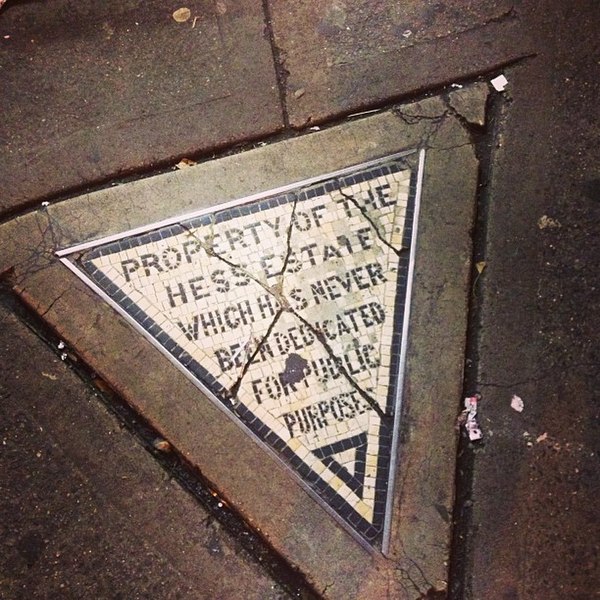
Set into the corner of Seventh Avenue and Christopher Street in Manhattan’s West Village is a triangular plaque reading PROPERTY OF THE HESS ESTATE WHICH HAS NEVER BEEN DEDICATED FOR PUBLIC PURPOSES. The “Hess triangle” is a remnant from a property dispute that unfolded here 100 years ago: The city was claiming eminent domain in order to demolish hundreds of buildings and expand the subway, but surveyors overlooked this 65-centimeter triangle, owned by Philadelphia landlord David Hess. Hess, outraged at the loss of his five-story apartment building, refused to donate the triangle to the public and added the plaque as a sort of existential revenge. In 1938 it was sold to the adjacent cigar store, and today it’s owned by a local realty corporation, the smallest plot of land in New York City.
Related: In 1973, artist Gordon Matta-Clark bought 13 unused pieces of land that were left over when property lines were redrawn in the borough of Queens. He paid between $25 and $75 for each. The sites are often irregular or isolated, located where other properties meet in a block, some measuring as little as 2×3 feet.
“When I bought those properties at the New York City Auction, the description of them that always excited me the most was ‘inaccessible’,” he said. “They were a group of fifteen micro-panels of land in Queens, leftover properties from an architect’s drawing. One or two of the prize ones were a foot strip down somebody’s driveway and a square foot of sidewalk. And the others were kerbstone and gutterspace. What I basically wanted to do was to designate spaces that wouldn’t be seen and certainly not occupied. Buying them was my own take on the strangeness of existing property demarcation lines. Property is so all-pervasive. Everyone’s notion of ownership is determined by the use factor.”
(Jeffrey Kastner and Brian Wallis, Land & Environmental Art, 2005.)
